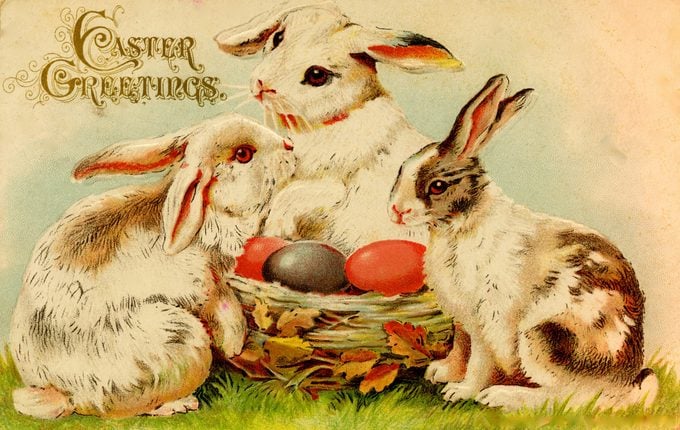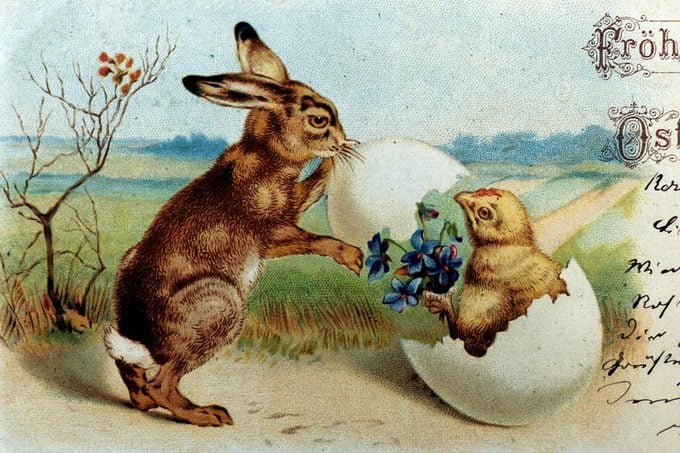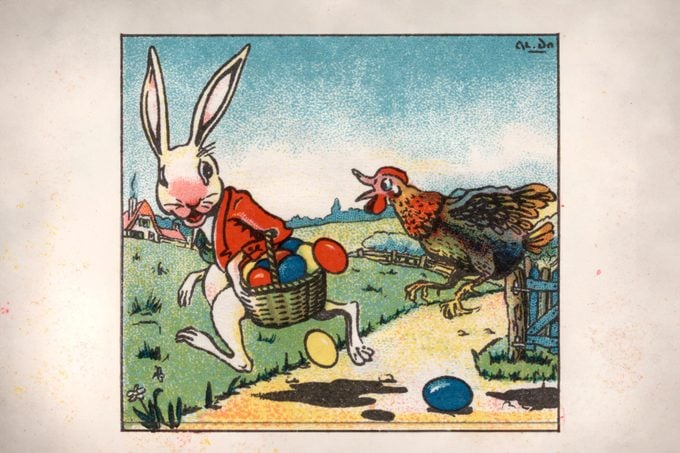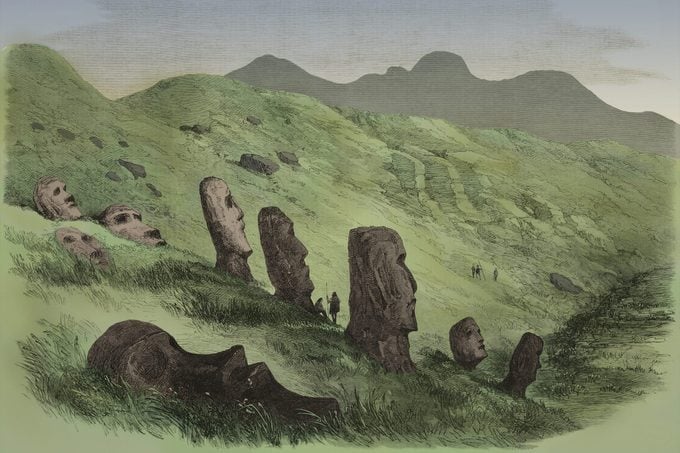The Easter Bunny’s Origins: The Interesting History Behind This Easter Symbol
Updated: Apr. 06, 2024

The Easter Bunny origin story is more mysterious than you might imagine, and religion seems to have nothing to do with it
Who isn’t familiar with the origins of Bugs, Thumper and Peter Cottontail? These famous bunnies may not be real, but they are beloved characters from classic childhood cartoons, movies and literature. But did you ever wonder how the most famous bunny of all, the Easter Bunny, became synonymous with Easter, a holiday commemorating the resurrection of Jesus? Turns out, the Easter Bunny origin story is a bit mysterious—but it may have something to do with the spring season. Read on to learn how a visit from this hoppy character (who delivers Easter baskets filled with candy and gifts) became a beloved Easter tradition.
Get Reader’s Digest’s Read Up newsletter for more holiday tips, fun facts, humor, cleaning, travel and tech all week long.
About the expert
|
What are the Easter Bunny’s origins?

There isn’t any historical documentation that explains how a rabbit became the furry face of Easter. However, the most obvious connection in the Easter Bunny origin story may be the calendar. April showers not only bring spring flowers, but the month also heralds the birth of baby rabbits. Both springtime and bunnies are iconic symbols of birth and renewal. “Rabbits (originally hares) are longstanding fertility symbols associated with the arrival of spring because they are so prolific and give birth as soon as the weather warms,” notes Diane Shane Fruchtman, PhD, an assistant professor of religion at Rutgers University.
There’s no religious significance to a bunny being part of the Easter holiday, according to Fruchtman. “Easter is a celebration of the resurrection of Jesus, who, according to the Gospels of Mark, Matthew and Luke, celebrated Passover on a Thursday (the Last Supper was a Passover Seder, celebrating the Israelites’ exodus from Egypt), was crucified on Friday and rose from the dead on Sunday.”
In fact, the Easter egg has more historical context than the Easter Bunny, in that eggs may have been part of the Passover Seder plate at the Last Supper, as they still are today. “We don’t know for sure, but later Jewish sources firmly incorporate the egg in the Passover ritual,” Fruchtman says, “though there are no bunnies to be found.”
What is the myth of Ostara?

The myth of Ostara is another popular theory that some contend is part of the Easter Bunny origin. The eighth-century scholar, known as the Venerable Bede, wrote in his work The Reckoning of Time, that the word Easter stems from Eostre (another version of the name Ostara). Fruchtman elaborates on this theory, saying that Bede (an English monk) wrote that the word comes from an Anglo-Saxon goddess, Eostre, whose feast day in the spring coincided with the day of the Christian paschal celebration. However, no other source mentions Eostre, and it’s entirely possible that Bede made her up. But Bede makes no mention of rabbits or eggs being associated with her.
When did the Easter Bunny first appear?
You’ll see the Easter Bunny pop up (or should we say, hop up) in Easter movies, on Easter decorations and in Easter memes (Easter puns too!), but when did it actually first appear? The earliest reference to the Easter Bunny dates back to before the 17th century, when the Germanic people of Europe introduced the Osterhase—a rabbit that brought gifts to children at Easter time. According to History.com, when these Germanic immigrants settled in America in the 1700s, they brought this tradition with them to Pennsylvania. The tradition even included children leaving carrots out for the Osterhase, much like leaving cookies for Santa at Christmas.
Why does the Easter Bunny bring eggs?

There are several theories about where Easters eggs originated and why the Easter Bunny delivers them. According to History.com, one contends that Easter eggs are connected to pagan traditions. The eggs were seen as Easter wishes, since they represented new life in the ancient world, and as such, were associated with pagan spring celebrations. In Christianity, Easter eggs are said to represent Jesus’s resurrection.
Although the true origin of the Easter Bunny (and Easter eggs) may never be fully known or agreed upon, they continue to be much-loved traditions of the Easter holiday. “Even if your typical Easter sermon won’t include anything about rabbits, eggs or fertility, that’s not to say that the Easter Bunny and Easter eggs are not religious traditions,” says Fruchtman. “Religion is about far more than doctrine, texts, belief and sacred buildings; it’s about practices, community, memory, family, home and traditions that have meaning to you.”
What does the Easter bunny look like?
The Easter Bunny is portrayed as being a white rabbit with long ears. You’ll find him hopping around in colorful human attire. During the spring and Easter season you’ll find Easter Bunny mascots at malls, events and parades, distributing baskets full of chocolate, eggs, jellybeans and treats for kids (and adults too, if they want to be part of the fun!).
Where does the Easter Bunny live?

We all know Santa lives at the North Pole, but the Easter Bunny’s homestead is shrouded in mystery. Trackeasterbunny.com believes the Easter Bunny lives on Easter Island, a remote Polynesian island in the Pacific. Reportedly, the Easter Bunny departs from Easter Island on Easter Eve to deliver gifts and candy all across the globe. Easter Island is also said to house magical animals that serve as the Easter Bunny’s loyal helpers, similar to the elves in Santa’s workshop.
Sources:
- Diane Shane Fruchtman, PhD, assistant professor of religion at Rutgers University
- History.com: “Easter Symbols and Traditions”
- The Conversation: “The very strange history of the Easter Bunny”
- Track Easter Bunny: “Where Does the Easter Bunny Live?”






















